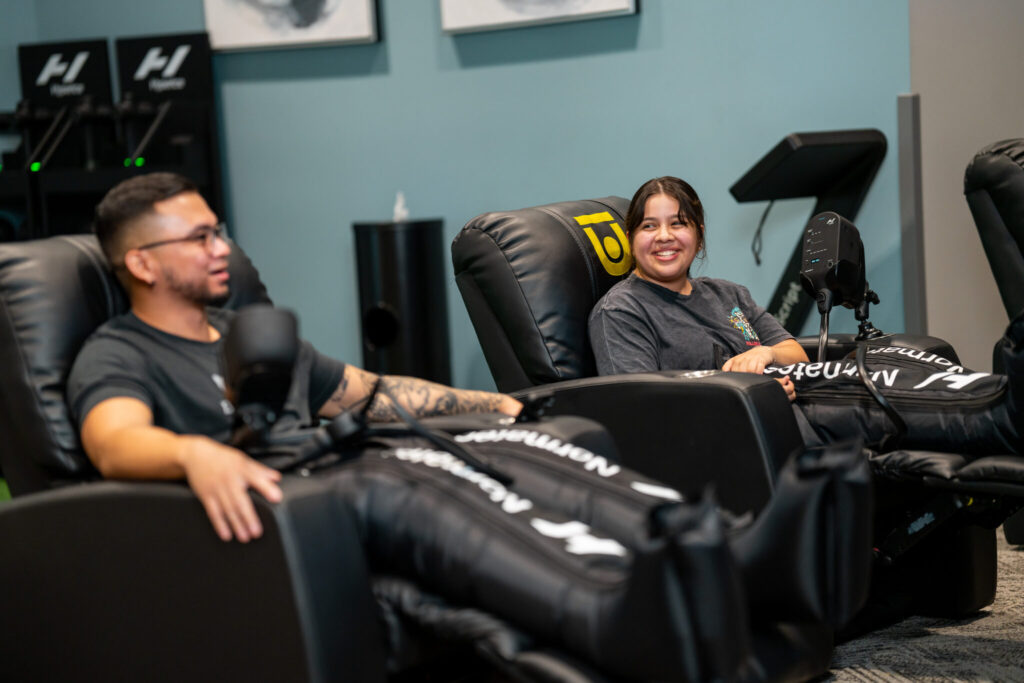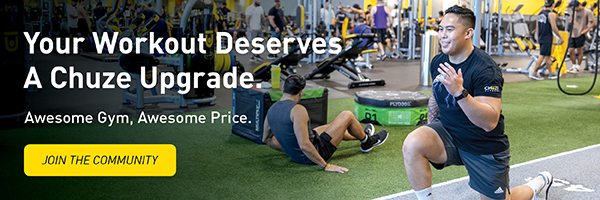How many days of rest between workouts?
When you’re focused on your fitness goals, it’s not uncommon to let “rest days” fall to the bottom of your priority list. But recovery is as integral to physical health as training itself—it helps build strength, improve performance, and reduce the risk of injury.
So how many days of rest do you need between workouts to experience these benefits?
Ideally, you’ll get 48 to 72 hours of rest between training days. If you enjoy high-intensity exercise, the American Council on Exercise recommends at least 1 full passive rest day every 7-10 days.
Below, we explain how rest days work to fuel future workouts, and what you can do to help your body jump (and build) even better.
Why rest days promote future training
Whether you’re new to fitness or a five-star athlete, rest days and recovery periods can make or break your immediate and long-term physical health. While you’re relaxing, your body is hard at work – on a molecular level – making the necessary repairs to adapt to the next workout.
In particular, rest days contribute to:
- Muscle recovery and growth – During periods of stress, your muscle fibers get “micro-tears” from exercise. When you take time to rest after your workout, those tears have time to heal and grow, creating even stronger muscle tissue. In sports science, this process is known as muscle hypertrophy.
- Glycogen replenishment – Glycogen is the main substance your body uses to fuel your workouts. Intense training depletes your stores, which are in your muscles and liver. Rest days – with the help of a carbohydrate-rich meal after your workout – allow your body to replenish its reserves. This facilitates muscle recovery and growth and helps avoid muscle fatigue.
- Hormonal balance – Physically speaking, your body perceives exercise as a type of stress. As a result, cortisol (the stress hormone) tends to rise during exercise. If you exercise intensely or frequently, rest days will help prevent you from entering a catabolic state: when your body can start to break down muscle instead of rebuilding it. Rest also allows your endocrine system to realign, potentially reducing your risk of developing hormonal imbalances.
On a macro level, rest days help avoid the burnout that can leave you feeling mentally and physically burned out after hitting the gym. By treating rest days as a critical component—not the enemy—of your regimen, you’re likely to see stronger, more sustained results from the effort you put in during your active days.
Understanding Active vs. Passive Recovery
Different types of workouts may require different recovery periods. For example, you may not need a full rest if you prefer to do gentle yoga.
Rest days are most important for those involved in high-intensity or endurance training, where muscle hypertrophy is most likely. For this reason, it is important to distinguish between “active” and “passive” recovery times:
- Active recovery may include light exercise to maintain circulation and muscle tone. Active recovery days may include exercises such as:
- Fast walking
- Swimming
- Yoga
- Stretching
- Passive recovery includes no exercise—a state of complete physical rest. This is ideal if you do high-intensity workouts, especially on a regular basis. These days, feel free to consider reading, doing a favorite hobby, or just relaxing on the couch as a workout for the day. Taste it!
Don’t forget about post-workout recovery
Rest days are important, but you can further support your recovery by taking a few simple steps right after your workouts.
Here’s what you can do to support your body as you transition into this recovery period:
- Cool down – Before you leave the gym, don’t forget to spend at least 10 minutes in relaxing movements. Low-intensity exercise helps bring heart rate and blood pressure back to baseline.
- Stretching – Stretching helps limit muscle soreness and promotes flexibility. It is believed that stretching combined with cool-down periods can help prevent muscle stiffness and soreness.
- Hydrate – If you do it right, you will likely lose a lot of water during exercise. Some people may lose up to 2 liters of fluid (and salt) per hour of high-intensity exercise. Ideally, adults will drink 16 to 24 ounces. of water or sports drinks after training.
- Refuel – Post-workout snacks help replenish glycogen stores and promote muscle recovery and growth. Your ideal post-workout meal may depend on the type of workout you did as well as your individual needs. To simplify things, carbohydrates are ideal for recovery, while protein helps with muscle recovery and growth.
Build holistic health at Chuze Fitness
After you’ve taken a break, rededicate yourself to a workout at Chuze Fitness. With one of the best value memberships you’ll find, you can enjoy premium, clean gym equipment, countless group classes and even a movie theater where you can work out while having fun. Need childcare? Chuze Fitness has it too. Please note that this service is not available at every Chuze Fitness, be sure to check your local Chuze’s location page.
Leave the routine behind and take the next best step with a free pass for 7 days today.
Sources:
Health line. Are rest days important for exercise?
https://www.healthline.com/health/exercise-fitness/rest-day#benefits
NCBI. Effect of different test-rest intervals on the reproducibility of the 10-repetition maximal exercise test: a pilot study with recreational resistance-trained men. https://www.ncbi.nlm.nih.gov/pmc/articles/PMC6719818/
Health line. Muscle hypertrophy and your training.
https://www.healthline.com/health/muscular-hypertrophy#definition
Runner’s world. Cortisol and exercise: what you need to know.
https://www.runnersworld.com/uk/health/mental-health/a60125903/cortisol-and-exercise/
Fits very well. Why you need rest and recovery after training. https://www.verywellfit.com/the-benefits-of-rest-and-recovery-after-exercise-3120575
Mayo Clinic. Aerobic exercise: how to warm up and cool down. https://www.mayoclinic.org/healthy-lifestyle/fitness/in-depth/exercise/art-20045517
Johns Hopkins Medicine. Sports and hydration for athletes: Q&A with a nutritionist.
 Reviewed by:
Reviewed by:
Ani is the Vice President of Fitness at Chuze Fitness and oversees the Group Fitness and Team Training departments. She has over 25 years of experience in club management, personal training, group exercise and instructor training. Ani lives with her husband and son in San Diego, California and enjoys hot yoga, snowboarding and all things health related.
2024-08-27 03:06:13
https://chuzefitness.com/wp-content/uploads/Copy-of-Chuze-La-Verne-9-28-23-KD-979-scaled.jpg


